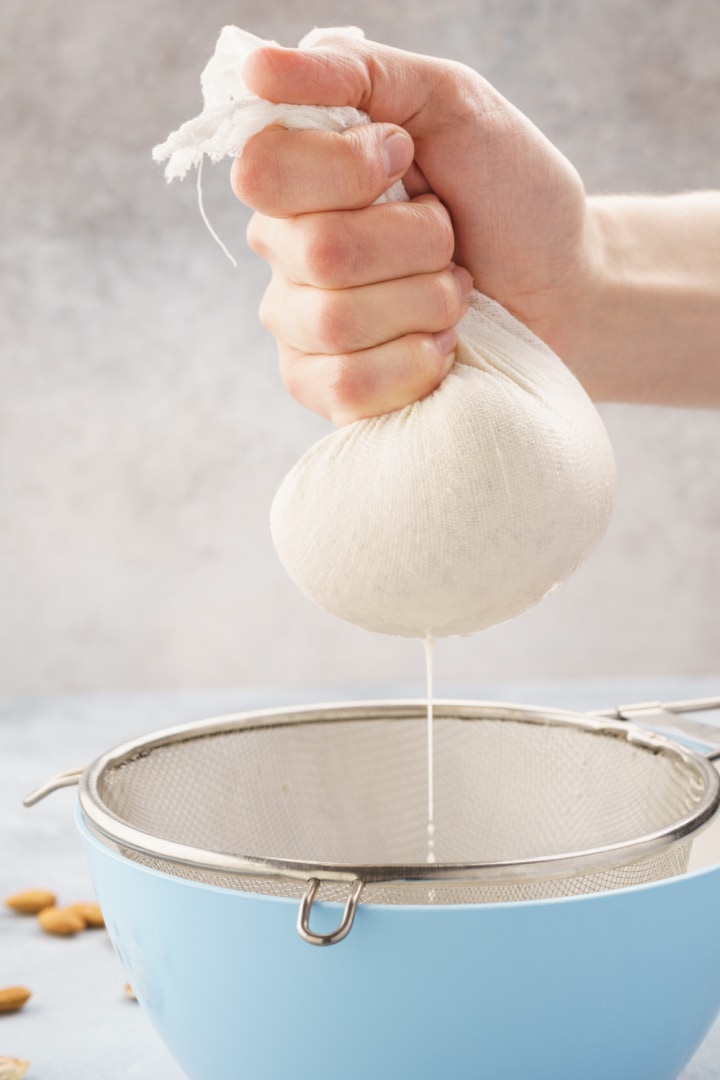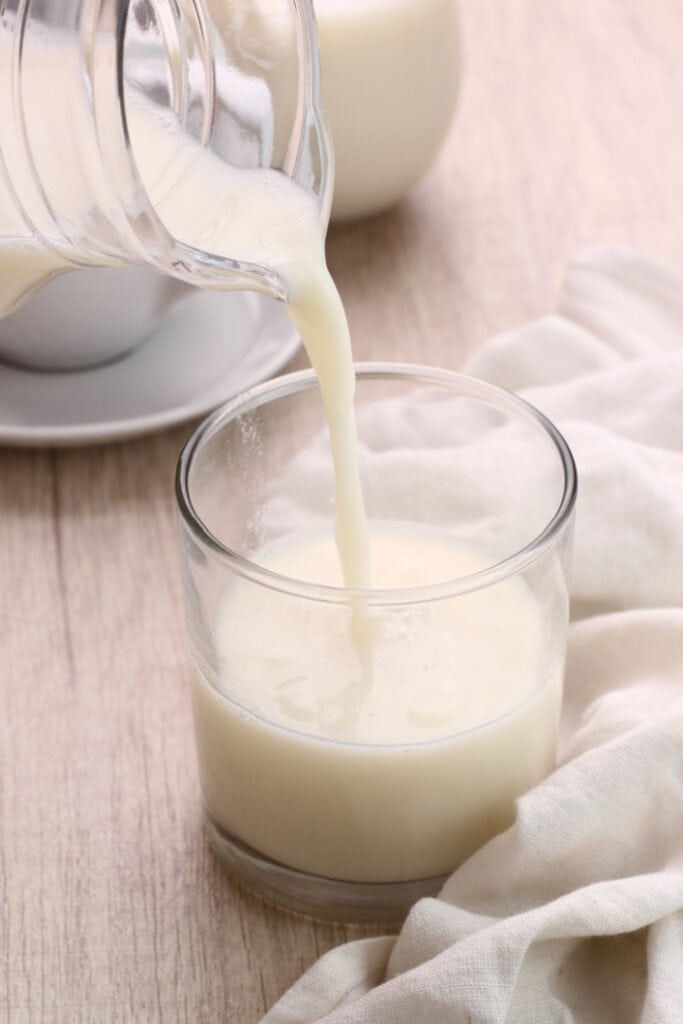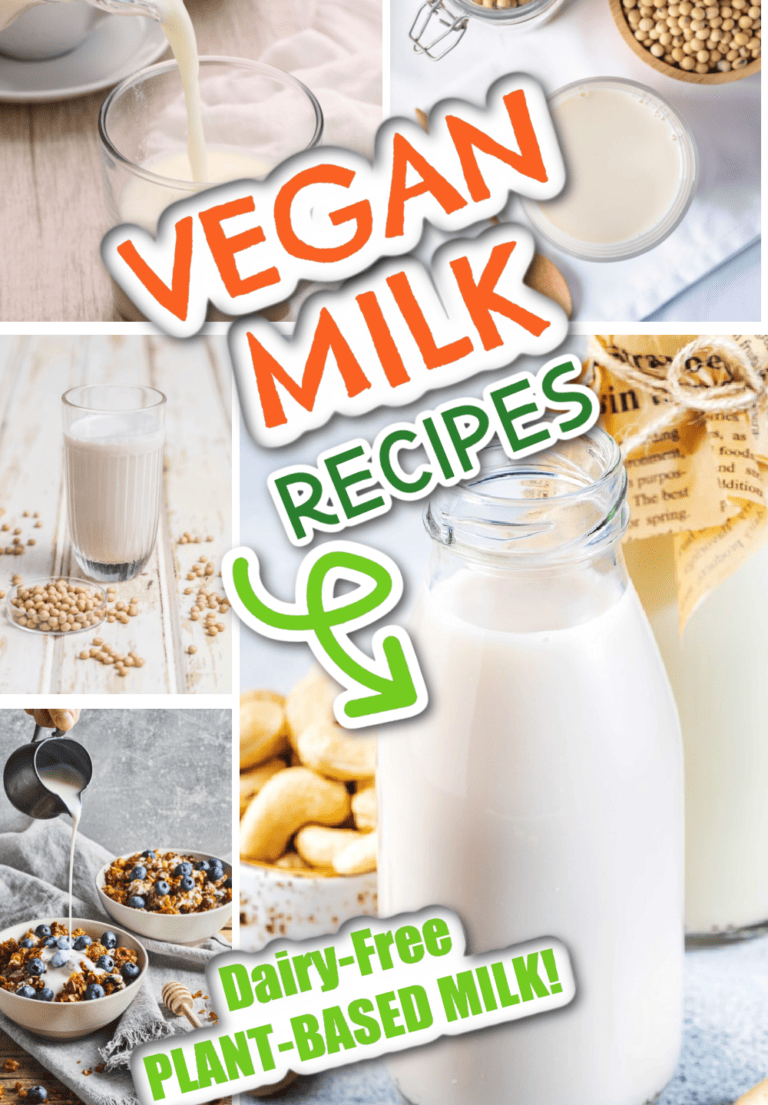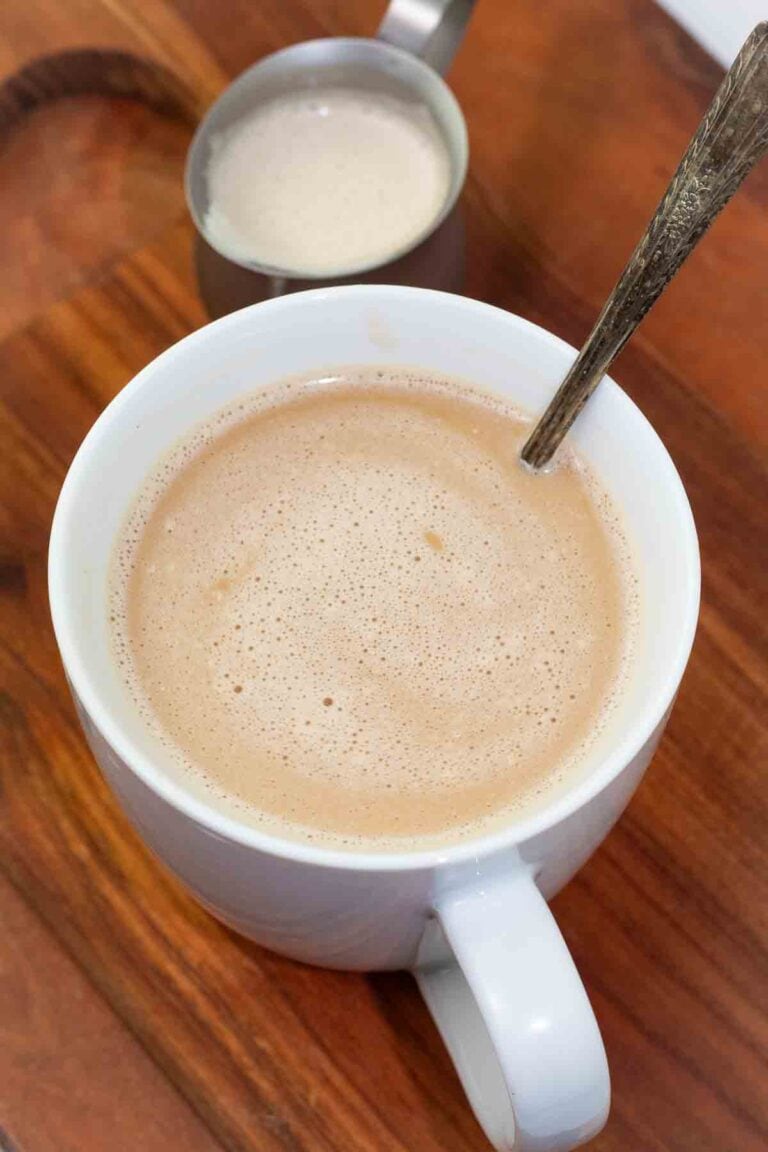How to Make Soy Milk
Making your own soy milk at home is a great idea because it’s fresher, free of preservatives, and allows you to control the ingredients for a healthier, more natural option. Plus, homemade soy milk is cost-effective and easy to customize for your taste preferences!

Soy milk is a terrific dairy-free milk option that requires only 2 ingredients–water and soybeans–with sweetener and salt being optional. It also happens to be completely vegan, nut-free, gluten-free, and sugar-free!
Homemade soymilk is fun to make in your own kitchen, and it’s great to keep on hand for drinking, adding to cereals, and cooking.
There are a number of homemade dairy-free milk options for folks avoiding lactose and dairy products in their diet. Cashew Milk and Almond Milk are two nut varieties that are also really good.
Reasons you will love this recipe
- Fresh and Natural: This homemade soy milk recipe is free from preservatives and additives, offering a pure and fresh plant-based milk alternative.
- Customizable Flavors: You can easily adjust the sweetness, thickness, and flavor by adding vanilla, cocoa, or natural sweeteners like dates or maple syrup.
- Cost-Effective: Making soy milk at home is budget-friendly, allowing you to enjoy fresh, high-quality soy milk at a fraction of the store-bought price.
Is soy milk good for you?
Some people are not too sure about soy, because it contains phytoestrogens. Turns out, phytoestrogens are health-promoting and are not at all like our body’s natural estrogen which can cause harm and lead to disease.
This makes so much sense because the countries that consume the most soy, such as Japan and China, have the lowest rates of cancer and chronic disease. This short video explains the benefits of soy. Soy has been found to have many nutritional benefits, so we include it as often as possible. We have an article about the nutritional benefits of soy that answers a lot of questions.
There are plenty of ways to add more soy to your diet besides just soy milk. Tofu is made from soy and is a great option. Recipes like Breakfast Tofu Scramble and even Chocolate Mouse are terrific ways to create dishes with lots of healthy soy.
Soy milk nutrition
Believe it or not, soy milk originally came about as a waste product produced from making tofu. Today, it is well-known as a lactose-free and dairy-free milk alternative that is actually delicious and good for you.
Soy milk contains antioxidants, phytonutrients, fiber, protein, and a host of other vitamins and minerals that are linked to many health benefits.
Nutrition facts:
In 1/2 cup homemade soy milk with only soybeans and water as the ingredients, these are the nutrition facts.
| Nutrient | Grams/mg |
| Calories | 104 |
| Fat | 4.6 |
| Protein | 8.5 |
| Carbohydrates | 7 |
| Fiber | 2.2 |
| Sugar | 1.7 |
| Calcium | 72 mg |
| Potassium | 420 mg |
| Iron | 4 mg |
| Cholesterol | 0 |
Ingredients you will need

The simplicity of ingredients needed to make soy milk is quite surprising. There are only 2 ingredients required, and a few more are optional to suit personal taste preferences.
- Soybeans- These are dried and uncooked non-GMO soybeans.
- Vanilla extract- This is completely optional.
- Sweetener- Adding sweetener is optional. Great sweetening options include dates, maple syrup, raw sugar, etc.
- Salt- Optional
Tips and suggestions
- Soaking- The soybeans can be soaked ahead of time if desired. They should keep in the water in an airtight container in the refrigerator for 1-2 days.
- Making ahead- The soaked and drained beans (without the water) will keep in the refrigerator for up to 4-5 days.
- Water- Don’t use the soaking water to make the milk. It needs to be fresh.
- Pulp- The leftover pulp is called okara and can be used to add protein to other dishes like stir-fries, smoothies, and baked goods.
- Taste- The milk’s flavor will enhance as it chills.
- Substitute- Cashew Milk is a great substitute for soy milk, and it doesn’t require any cooking or straining.
How to make soy milk
The recipe card at the bottom of the page has the full list of ingredients with measurements and instructions.
STEP #1: Wash the dried beans by placing them in a colander and running warm water over them in a sink to remove any surface dirt.
STEP #2: Transfer the beans into a medium-sized bowl and add enough water to cover them by about 3 inches over the top. This is soaking water and additional water will be needed later for cooking.
Allow the beans to soak overnight at room temperature. If your room is particularly cool, they may require more soaking time. You’ll know the beans have soaked long enough when they have at least doubled in size and will split apart when pinched.

STEP #3: Drain and rinse the beans and then place them in a high-powered blender along with 4 cups of fresh water. Process the mixture on high in the blender for about 1-2 minutes until smooth.

STEP #4: Pour the mixture through a reusable nut bag to remove any small particles that might be left. There’s a picture included showing what this will look like. There’s also a helpful video demonstrating the process.
STEP #5: Once the milk is strained, pour it into a medium saucepan and simmer for about 20 minutes stirring the bottom frequently to avoid scorching. If you’re planning to add vanilla, salt, and/or sweetener, do that during this cooking process.
A thin film will develop over the top of the milk as it simmers on low. Use a spoon to scoop it off every 3-4 minutes.
STEP #6: Once cooked, pour the milk through a sifter and into a bowl to help remove any bits of film left. Leave the milk in the bowl to cool down for a few minutes before pouring it into an airtight container. Allow it to chill for a few hours in the refrigerator before using.
Uses for soy milk
Soy milk is great for drinking, and it can be used in any recipe to replace regular milk. These are some of the most common uses.
- Pour over oatmeal and cereal
- Use in baking like Chocolate Mug Cake and Blueberry Muffins
- Make soups like Creamy Potato Soup
Frequently Asked Questions
Soybeans should be soaked for 8 to 12 hours or overnight to soften and make them easier to blend into smooth soy milk.
The leftover soy pulp, known as okara, can be used in recipes like smoothies, baked goods, or as an addition to veggie burgers for added fiber and protein.
Homemade soy milk will keep well in an airtight container in the refrigerator for up to 2-3 days. It also freezes well for at least 3 months and maybe even longer.

If you try this recipe, please let us know how you like it by rating it and leaving a comment. We love to hear from you!
Want to Save This Recipe?
Enter your email & I’ll send it to your inbox. Plus, get great new recipes from me every week!
By submitting this form, you consent to receive emails from EatPlant-Based

Homemade Soy Milk
Ingredients
- 1/2 cup dried soybeans 80 grams
- 4 cups water 1 liter
- 1/2 teaspoon vanilla extract optional
- 1 tablespoon sweetener of choice maple syrup, raw sugar, etc (optional)
- 1 pinch of salt optional
Instructions
- The first step is to wash the dried beans by placing them in a colander and running warm water over them in a sink to remove any surface dirt.
- Transfer the beans into a medium-size bowl and add enough water to cover them by about 3 inches over the top. This is soaking water and additional water will be needed later for cooking.
- Allow the beans to soak overnight at room temperature for at least 8 hours. If your room is particularly cool, they may require more soaking time. You’ll know the beans have soaked long enough when they have at least doubled in size and will split apart when pinched.
- Drain and rinse the beans and then place them in a high-powered blender along with 4 cups of fresh water. Process the mixture on high in the blender for about 1-2 minutes until smooth.
- Pour the mixture through a reusable nut bag to remove any small particles that might be left. There's a picture included showing what this will look like. There's also a helpful video demonstrating the process.
- Once the milk is strained, pour it into a medium saucepan and simmer for about 20 minutes stirring the bottom frequently to avoid scorching. If you’re planning to add vanilla, salt, and/or sweetener, do that during this cooking process.
- A thin film will develop over the top of the milk as it simmers on low. Use a spoon to scoop it off every 3-4 minutes.
- Once cooked, pour the milk through a sifter and into a bowl to help remove any bits of film left. Leave the milk in the bowl to cool down for a few minutes before pouring it into an airtight container. Allow it to chill for a few hours in the refrigerator before using.
Video
Notes
- Soaking- The soybeans can be soaked ahead of time if desired. They should keep in the water in an airtight container in the refrigerator for 1-2 days.
- Making ahead- The soaked and drained beans (without the water) will keep in the refrigerator for up to 4-5 days.
- Water- Don’t use the soaking water to make the milk. It needs to be fresh.
- Pulp- The leftover pulp is called okara and can be used to add protein to other dishes like stir-fries, smoothies, and baked goods.
- Taste- The milk’s flavor will enhance as it chills.
- Storing- Homemade soy milk will keep well in an airtight container in the refrigerator for up to 2-3 days. It also freezes well for at least 3 months and maybe even longer.
- Substitute- Cashew Milk is a great substitute for soy milk, and it doesn’t require any cooking or straining.
Nutrition
Disclaimer
To obtain the most accurate representation of the nutritional information in a given recipe, you should calculate the nutritional information with the actual ingredients used in your recipe, using your preferred nutrition calculator. You are solely responsible for ensuring that any nutritional information provided is accurate, complete, and useful.
About Terri Edwards
Hi guys! I am the content creator behind EatPlant-Based and a licensed Food for Life instructor with the Physicians Committee for Responsible Medicine. I am passionate about sharing healthy recipes and tips to empower others to get healthy. I’m so glad you’re here! Read More…





